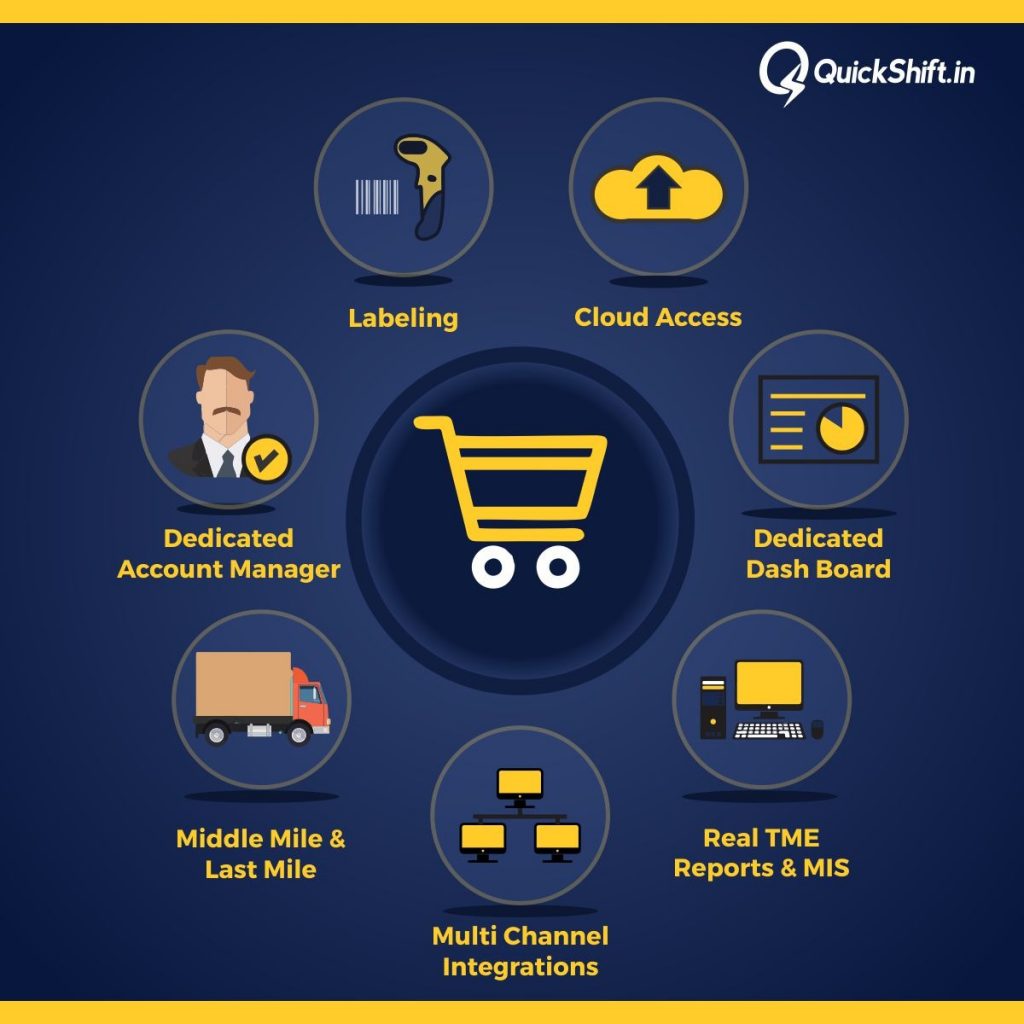Contents
Order Management Importance to Grow a Business
When a client clicks the “Buy” button, their order’s journey starts. New orders are set on your ecommerce business stage, at that point whoever is storing your inventory has to choose, and ship the correct items to the right point. This probably won’t appear to be too hard when you have a brand new business. A couple of orders come in every day and you can immediately satisfy them yourself. Don’t worry about it. Potential obstacles can emerge, be that as it may, as sales grow, channels increase, items are added to your stock, and your customer base increases. An order management system can help remove bottlenecks for you as your ecommerce store grows. Here’s the secret.
What is order management?
Order management relates to the way toward receiving, monitoring, and fulfilling customer orders.
When scaling your business, it’s necessary to automate and streamline this procedure else, you’ll, in the long run, be overpowered by the sheer number of orders coming in. QuickShift is one of the best solutions for warehouse fulfillment service in India.
What is an order management system?
An order management system gives you a one-stop shop to see and deal with all customer orders in one spot. Some systems offer a two-way adjust that ensures order data is passed between your order management system and your ecommerce business stage while supplying you with visibility into the whole procedure. This can help automate the progression of order data to each part of the inventory management. That indicates you can track the whole adventure of a customer order, from the “Buy” button to delivery and even returns. In short, an order management system arranges and automates everything that requirements to happen to get customers what they ordered on time and in good condition.
Why your business needs accurate order management
Setting the effort to execute order management processes and systems can appear as though additional formality when you’re bootstrapping things with a little group. However, as you develop your business, you may fall behind attempting to satisfy each and every order without anyone else. Here are only a couple of the issues resolved by exact order management.
- Keep from overstocking and under stocking
Higher inventory turnover can be something worth being thankful for whatever length of time that you’re not finished or understocking. Overstock and you’re sinking money you can’t bear the cost of on unused items gathering dust before they hopefully sell one day. Understock and you chance losing simple deals from customers who were prepared to buy currently, however, will likely finish up giving that cash to your rival.
- Fewer mistakes on fulfilling orders
You just pick the right item, package it well, print the shipping label, and send it off..
Presently envision that your business takes off. orders are coming in every day from everywhere throughout the world through numerous channels. Meanwhile, clients are shelling you with messages asking about their order status, complaining about delivery times, and requesting discounts. It’s solitary human to start making mistakes when you are managing this volume of orders and the dimension of complexity. Wrong items, wrong locations, postponed shipment. These can harm the reputation of a growing ecommerce business. That is the reason it’s so essential to have a streamlined order management system set up. More automation and synchronicity means less human error. Things may, in any case, turn out badly once in for a moment intermittently that is inevitable however you’ll have the capacity to scale your business without getting to be overwhelmed.
- Reliable information that helps you make data-driven decisions
It’s difficult to understand information when it’s scattered across multiple platforms. Order management systems allow you to see all orders information in one place, making it simpler to operate the accessible data and make data-driven decisions. Order management systems also make it simpler to recognize issues since you can see the entire procedure from a birds’ eye views rather than as independent sections. The potential to make data-driven decisions can spare you cash over the long run. At the point when request volume is high, fixing even the smallest inefficiency can significantly affect your main concern.
- Less wasted time
In the event that you maintain an online business, odds are that you’re a maker, entrepreneur, or visionary. Sometimes all three. In any case, you realize what likely doesn’t show up on that list? Ecommerce business leader and which is all well and good. Consistently spent investigating fulfillment issues are an hour that could be spent on growing your business through progressively key activities like item advancement or building your brand.
Consider, Is managing stock, packaging products, shipping orders, and taking care of discounts extremely the best utilization of your time? It’s alright to do everything yourself when you’re simply beginning, however, there comes a moment that it essentially doesn’t make sense anymore.
The order management cycle

The order management cycle is an end to end process that starts when a customer buys an item and proceeds through delivery and once in a sometimes returns.
The procedure requires a few moving parts, regularly constrained by isolated substances, to meet up to give a firm client experience.
- Order placed
Orders are placed by customers from better places, at various moments, over each accessible channel.
To streamline this procedure on the backend, you need a multichannel or Omni channel order management tool that can automatically push the relevant data (order details, shipping details, delivery address, etc.) from your online business store to your order management system.
- Order received
Ones the order is placed, the information is passed to the warehouse fulfillment center where the preparing of the order starts.
- Order is picked
Picking generally refers to picking an item from the inventory and delivering it to the parking area.
3PLs frequently have picking groups devoted to this task.
This is the place warehouse management assumes a significant job: The manner in which stock is masterminded impacts the time it takes to fulfill each order.
- Order is packaged
Once the order is dispatched to the packaging area, it’s packaged in a way that limits the dimensional weight while as yet giving sufficient assurance.
Some 3PLs enable customers to give their very own custom packaging to give customers a one of a kind unboxing experience.
- Order ships
Once the item is packaged, it’s delivered to the customer. Some 3PLs partner with explicitly favored transporters, while others rate shop to guarantee that their customers get the best delivery costs. Transporters, for the most part, lift the orders up straight from the 3PL fulfillment service.
Each order is assigned out the following number which is then shared with the client, allowing them to see the status of their order at all times.
- Item delivered
In the end, things are delivered to the end customer. Be that as it may, would they say they were the correct things? Furthermore, would they say they were delivered on time?
If order management has been on point this whole time, your chances are essentially higher.
- How’d we do?
Catching up with customers post-delivery isn’t only for lip service.
Staying in consistent contact with faithful customers can enable you to make sense of why people hold returning to your online store and how you can build the lifetime estimation of every customer.
Meanwhile, spotting repeating issues can make an input circle that enables your business to improve.
- Measure what could have been improved
Should you always accept returns and give discounts?
On the one hand, returns are an inescapable piece of online business, and it’s critical to deal with them well: Customers who are discontent with the arrival procedure are 3x bound to never purchase from that store until the end of time.
In any case, on the other, understanding the root issue of client disappointment and tending to it can enable you to avoid future returns and reduce costs.
Order management should offer an all-encompassing method for investigating the whole online business logistics process. By tracking vital KPIs like lead times or return rates alongside subjective input, you can improve the procedure to expand customer loyalty and cut expenses in the meantime.

Comments are closed.